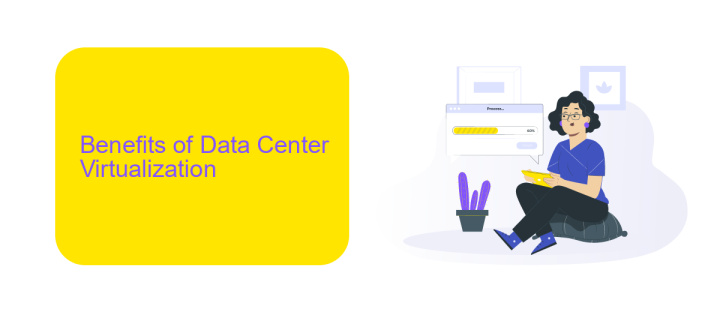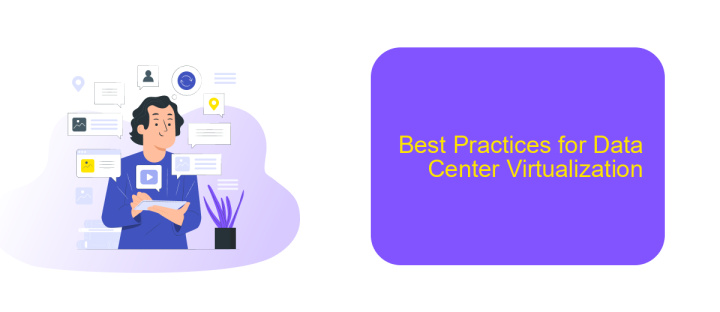Integration of Data Center Virtualization
Data center virtualization has revolutionized the IT landscape by enabling more efficient resource utilization, reducing costs, and enhancing scalability. By abstracting physical hardware and creating virtual environments, organizations can optimize their infrastructure, streamline operations, and improve overall agility. This article explores the key benefits, challenges, and best practices for integrating data center virtualization into modern IT ecosystems.
Introduction
In recent years, the integration of data center virtualization has become a critical component for modern IT infrastructure. This technology allows organizations to optimize resource utilization, reduce operational costs, and improve scalability. By abstracting physical hardware and creating virtual environments, businesses can achieve greater flexibility and efficiency.
- Improved resource management
- Enhanced scalability
- Reduced operational costs
- Increased flexibility
To facilitate seamless integration and management of virtualized environments, services like ApiX-Drive offer robust solutions. ApiX-Drive enables automated data synchronization across various platforms, ensuring that virtualized systems operate cohesively. This service simplifies the integration process, allowing IT teams to focus on strategic initiatives rather than manual configurations.
Benefits of Data Center Virtualization

Data center virtualization offers numerous benefits, significantly enhancing operational efficiency and flexibility. By decoupling hardware and software, organizations can optimize resource utilization, reduce hardware costs, and minimize energy consumption. This leads to a more sustainable and cost-effective IT infrastructure. Additionally, virtualization simplifies management tasks, allowing IT teams to deploy, manage, and scale applications rapidly without the need for physical hardware adjustments.
Moreover, data center virtualization enhances disaster recovery and business continuity. Virtual machines can be easily backed up and restored, ensuring minimal downtime in case of hardware failure. Integration tools like ApiX-Drive can further streamline operations by automating data synchronization between virtual environments and other business applications. This integration capability ensures seamless data flow, enhancing overall productivity and operational efficiency. As a result, organizations can achieve greater agility, scalability, and resilience in their IT operations.
Challenges of Data Center Virtualization

Data center virtualization brings numerous benefits, but it also presents several challenges that organizations must address to ensure seamless integration and operation. These challenges can range from technical complexities to security concerns, impacting the overall efficiency and reliability of virtualized environments.
- Performance Issues: Virtualization can lead to resource contention, where multiple virtual machines compete for the same physical resources, potentially causing performance degradation.
- Security Risks: Virtual environments are susceptible to new types of cyber threats, requiring robust security measures and constant monitoring.
- Management Complexity: Managing a virtualized data center requires specialized tools and expertise, which can increase operational complexity and costs.
- Integration Difficulties: Integrating various virtualized services and ensuring compatibility with existing systems can be challenging. Platforms like ApiX-Drive can facilitate seamless integration by automating data transfers and synchronizing disparate systems.
Addressing these challenges requires a comprehensive strategy that includes investing in advanced management tools, enhancing security protocols, and leveraging integration services like ApiX-Drive to streamline operations. By doing so, organizations can maximize the benefits of data center virtualization while minimizing potential drawbacks.
Best Practices for Data Center Virtualization

Implementing best practices in data center virtualization is crucial for achieving optimal performance and efficiency. One fundamental aspect is to ensure proper planning and assessment of your current infrastructure. This helps in identifying potential bottlenecks and understanding the specific needs of your organization.
Another critical practice is to maintain a robust security framework. Virtualized environments can be susceptible to various threats, so implementing strong security measures like firewalls, encryption, and regular security audits is essential. Additionally, continuous monitoring and management of virtual machines can prevent resource overutilization and ensure smooth operations.
- Plan and assess current infrastructure
- Implement strong security measures
- Continuously monitor and manage virtual machines
- Utilize automation tools for efficiency
- Regularly update and patch systems
For seamless integration and management of various services, consider using tools like ApiX-Drive. This platform allows you to automate workflows and integrate different applications effortlessly, enhancing the overall efficiency of your data center operations. By following these best practices, you can ensure a secure, efficient, and scalable virtualized environment.


Conclusion
The integration of data center virtualization has revolutionized the way organizations manage their IT infrastructure. By abstracting physical hardware and creating virtual environments, businesses can achieve greater flexibility, efficiency, and scalability. This transformation not only reduces operational costs but also enhances disaster recovery capabilities and simplifies overall IT management. As companies continue to adopt virtualization technologies, they are likely to see significant improvements in resource utilization and application performance.
One of the key aspects of successful data center virtualization is the seamless integration of various systems and services. Tools like ApiX-Drive play a crucial role in this process by automating data transfers and synchronizing applications, thereby streamlining operations and reducing manual efforts. By leveraging such integration platforms, organizations can ensure that their virtualized environments are not only efficient but also highly responsive to changing business needs. Ultimately, the adoption of data center virtualization, supported by robust integration services, paves the way for a more agile and resilient IT infrastructure.
FAQ
What is Data Center Virtualization?
How does virtualization improve data center efficiency?
What are the key benefits of integrating data center virtualization?
How can I automate and streamline the integration of data center virtualization?
What challenges might I face during the integration of data center virtualization?
Apix-Drive is a simple and efficient system connector that will help you automate routine tasks and optimize business processes. You can save time and money, direct these resources to more important purposes. Test ApiX-Drive and make sure that this tool will relieve your employees and after 5 minutes of settings your business will start working faster.

